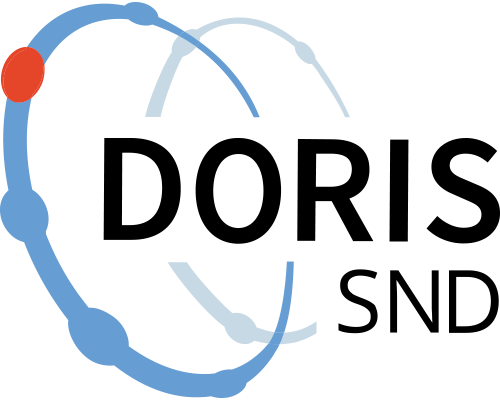Input data files for habitat network analyses of amphibians in the Gothenburg region
https://doi.org/10.5878/dn29-z128
This data package includes two related data files that can be used as input for habitat network analyses on amphibians using a specific habitat network analysis tool (HNAT; v0.1.2-alpha):
1. AmphibianHabitatNetwork_Parameters.xlsx
2. BiotopeMap_GothenburgRegion_withPondsRoadsAndBuildings.tif
HNAT is a plugin for the open-source Geographic Information System QGIS (https://qgis.org/en/siteÖppnas i en ny tabb). HNAT can be downloaded at https://github.com/SMoG-Chalmers/hnat/releases/tag/v0.1.2-alphaÖppnas i en ny tabb. To run the habitat network analyses based on the input data provided in this package one must install the plugin HNAT into QGIS. This software has been created by Chalmers within a research project financed by the Swedish government research council for sustainable development, Formas (FR -2021/0004), within the framework of the national research program "From research to implementation for a sustainable society 2021".
The Excel-file contains the parameters for amphibians and the GeoTiff-file is representing a biotope raster map covering the Gothenburg region in western Sweden. SRID=3006 (Sweref99 TM). Pixel size =10x10 metres. The pixel values of the biotope map correspond to the biotope codes listed in the in the parameter file (see column “BiotopeCode”). For each biotope the parameter file holds biotope specific parameter values for two alternative amphibian models denoted “Amphibians_NMDWater_ponds” and Amphibians_NMDWater_ponds_NoFriction”. The two alternative parameter settings can be used to demonstrate the difference in model prediction with or without the assumption that amphibian movements are affected by barrier effects caused by roads, buildings and certain biotopes biotope types. The “NoFriction” version assumes that amphibian dispersal probability declines exponentially with increasing Euclidian distance whereas the other set assumes dispersal to be affected by barriers. Read the readme file for details on each parameter provided in the parameter file.
The GeoTiff-file is a biotope mape which has been created by combining a couple of publicly available geodata sets. As a base for the biotope map the Swedish land cover map NMD was used (https://geodata.naturvardsverket.se/nedladdning/marktacke/NMD2018/NMD2018_basskikt_ogeneraliserad_Sverige_v1_1.zipÖppnas i en ny tabb). To achieve a greater cartographic representation of small ponds, streams, buildings and transport infrastructure relevant for amphibian dispersal, reproduction and foraging, NMD was complemented by information from a number of vector layers.
In total, 20 new biotope classes representing buildings of different height ranging from less than 5 m up to 100 m, were added to the basic land cover map. The heights were obtained by analyzing the LiDAR data provided by Swedish Land Survey (for details see Berghauser Pont et al., 2019). The data was rasterized and added on top of existing pixels representing buildings in the Swedish land cover map.
The roads were separated into 101 new biotope classes with different expected number of vehicles per day. Instead of using statistics from the Swedish Transport Administration on observed number of vehicles per day relative traffic volumes were predicted based on angular betweenness centrality values calculated from the road network using PST (Place Syntax Tool, Stavroulaki et al. 2023). PST is an open-source plugin for QGIS (https://www.smog.chalmers.se/pstÖppnas i en ny tabb). Traffic volumes are expected to be correlated to the centrality values (Serra and Hillier, 2019). The vector layer with the centrality values was buffered by 15 m prior to rasterization. After that the new pixel values were added to the basic Land cover raster in sequence following the order of centrality values.
Information on small streams with a maximum width of 6 m was added from a vector layer of Swedish streams (https://www.lantmateriet.se/en/geodata/geodata-products/product-list/topography-50-download-vectorÖppnas i en ny tabb). These lines where rasterized and added to the land cover raster by replacing the underlaying pixel values with new class specific pixel values.
Small pondlike waterbodies was identified from the NMD data selecting contiguous fragments of the original NMD biotope class 61 with a smaller area than 1 hectare. Pixels representing the smaller water bodies was then changed to 201.
References
Berghauser Pont M, Stavroulaki G, Bobkova E, et al. (2019). The spatial distribution and frequency of street, plot and building types across five European cities. Environment and Planning B: Urban analytics and city science 46(7): 1226-1242.
Serra M and Hillier B (2019) Angular and Metric Distance in Road Network Analysis: A nationwide correlation study. Computers, Environment and Urban Systems 74: 194-207.
Stavroulaki I, Berghauser Pont M, Fitger M, et al. (2023) PST Documentation_v.3.2.5_20231128, DOI:10.13140/RG.2.2.32984.67845.
Datafiler
Datafiler
Dokumentationsfiler
Dokumentationsfiler
Citering och åtkomst
Citering och åtkomst
Tillgänglighetsnivå:
Skapare/primärforskare:
Forskningshuvudman:
Data innehåller personuppgifter:
Nej
